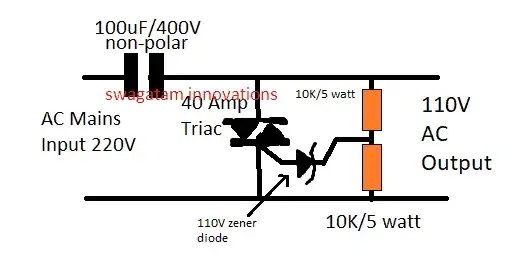I want to buy a AC voltage converter for frequent international travel with some small appliances, and should support step up and down between 110V and 220V; found this one https://amzn.to/2voExKD is portable but it supports max 100 Watts only, then found this one https://amzn.to/30UKV8b supports up to 2000 watts but it weighs 30 lbs very bulky not convenient to carry on to flights; then found this one https://amzn.to/2U7FDF1 supports up to 2300 watt and lightweight to carry, but it supports step down from 220V to 110V only, not the step up;
so I wonder is it possible to make a product that
- support both step up/down AC voltage converter, between 110V and 220V;
- support large power consumption up to 2000 watts ideally;
- also being lightweight and portable, easy to carry to flight check-in luggage? (less than 3lbs, or as small as possible)
Update: I edited a little bit to be clear I wish to see a product has all the 3 features, especially large power appliances (like 1500 w induction top cooker), not only laptop/phone charger which I know that takes 100-240V variant AC input;
Thanks;
If not, could someone tell the rationales why can't make a product with all above 1 & 2 & 3 features?
If can only choose 2 features out of the 3, I would possible choose this https://amzn.to/2U7FDF1 supports up to 2300 watt and lightweight to carry, and one-way only step down from 220V to 110V; why I am not seeing a step-up only product? Is step-up harder to make than step-down only? which one of the step up/down is more energy efficient, and less energy loss inner heat dissipation?
I like to hear some in-depth answer about rationales behind step-up and step-down; that can explain why
- the first product https://amzn.to/2voExKD is lightweight/portable but supports max 100 Watts only
- the second one https://amzn.to/30UKV8b supports up to 2000 watts for both step up and down between 220V <=> 110V, but why it weighs 30 lbs why it needs to be made so bulky, is it related to heat dissipation? how much energy loss if this is really working at 2000 watts;
- the third one https://amzn.to/2U7FDF1 supports up to 2300 watt step down from 220V to 110V only, it's lightweight to carry, Weight:1.3lb, is it because step-down is easier to make than step-up AC transformers? Does step-down only converters have better energy efficiency? Nearly no heat dissipation, Or 100% energy conversion? Is that the reason why it can be made so small (Weight:1.3lb)?
Thanks again;

